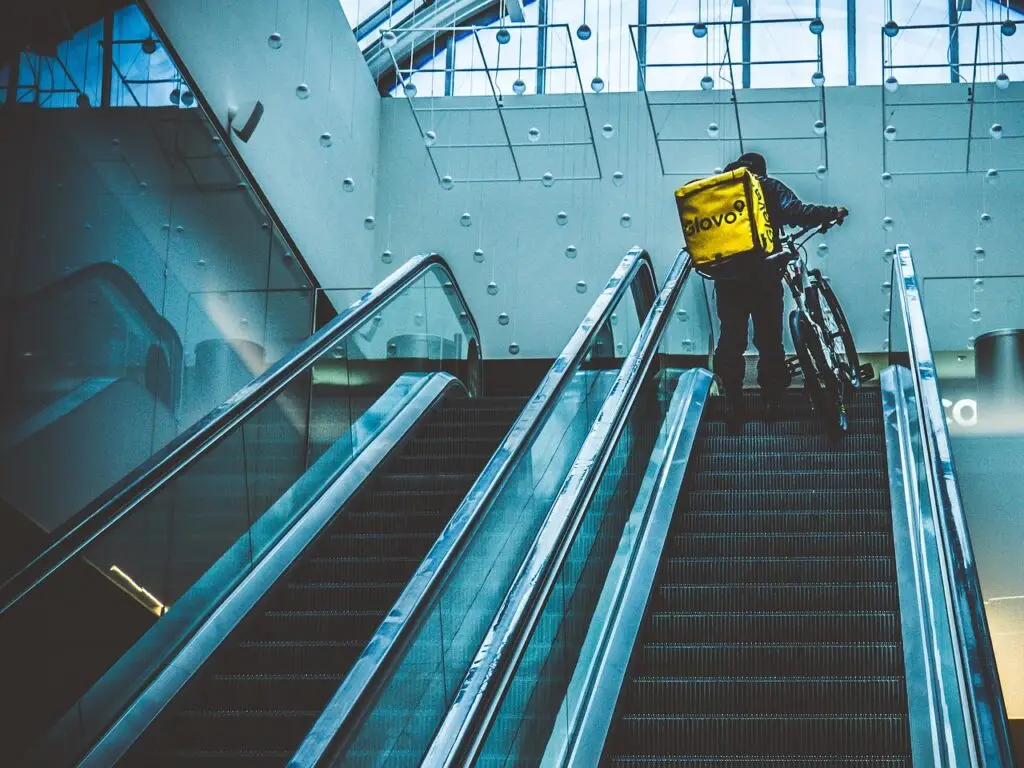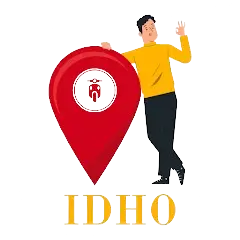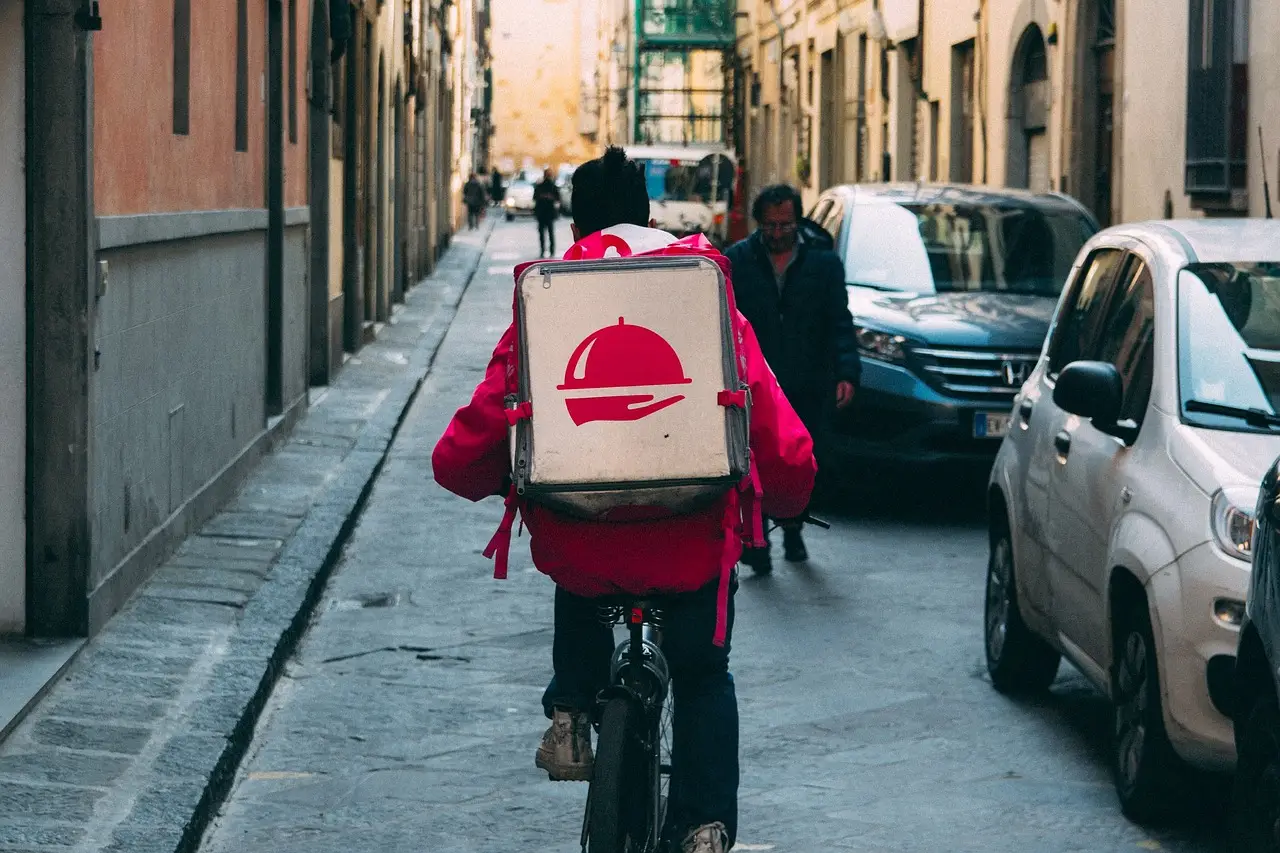Introduction: In the bustling streets of urban landscapes, the hum of delivery vehicles has become a constant presence. From trucks to vans, these motorized giants navigate through traffic, contributing to congestion, pollution, and resource depletion. Amidst this chaos, however, a dynamic solution is roaring its way towards efficiency – goods delivery via motorcycles. In this article, we explore the burgeoning trend of utilizing motorcycles for goods delivery, examining its advantages, challenges, and the transformative potential it holds for urban logistics.

- The Emergence of Motorcycles in Urban Logistics:
- Historical Context: Motorcycles have a rich heritage in urban transportation, dating back to their invention in the late 19th century. Today, their resurgence in goods delivery is driven by various factors.
- Speed and Agility: Motorcycles offer unparalleled speed and agility, allowing delivery riders to navigate through congested urban areas swiftly. This agility is particularly advantageous for last-mile delivery, where time sensitivity is paramount.
- Cost-Efficiency: Operating and maintaining motorcycles entail lower costs compared to larger delivery vehicles. With rising fuel prices and maintenance expenses, businesses can achieve significant cost savings by incorporating motorcycles into their delivery fleet.
- Flexibility: Motorcycles can access narrow streets, alleys, and tight spaces inaccessible to larger vehicles, making them ideal for delivering goods to densely populated urban areas.
- Advantages of Goods Delivery via Motorcycles:
- Speed and Efficiency: Motorcycles offer faster delivery times compared to traditional delivery vehicles, especially for short-distance journeys in urban environments. Their ability to maneuver through traffic jams and congested streets enables timely deliveries, enhancing customer satisfaction.
- Cost Savings: With lower fuel consumption and maintenance costs, motorcycles provide a cost-effective alternative for goods delivery, particularly for small and medium-sized businesses. This cost efficiency translates into competitive pricing for customers.
- Reduced Environmental Impact: While motorcycles are not entirely emission-free, they produce fewer emissions compared to larger delivery vehicles. As such, employing motorcycles for goods delivery can contribute to reducing carbon footprint and mitigating air pollution in urban areas.
- Enhanced Accessibility: Motorcycles can reach destinations that are inaccessible to larger vehicles, such as narrow alleys or areas with limited parking space. This accessibility enables efficient last-mile delivery, ensuring goods reach their destination promptly.
- Overcoming Challenges and Limitations:
- Payload Capacity: One of the primary challenges of goods delivery via motorcycles is their limited payload capacity compared to larger vehicles. However, innovative cargo designs and load-carrying accessories are addressing this limitation, allowing motorcycles to transport larger volumes of goods efficiently.
- Safety Concerns: Ensuring the safety of delivery riders amidst urban traffic is paramount. Companies must invest in rider training, provide appropriate safety gear, and advocate for motorcycle-friendly infrastructure to mitigate safety risks.
- Regulatory Compliance: Adhering to traffic regulations and safety standards is essential for motorcycle-based goods delivery. Companies must ensure that their delivery riders are licensed and comply with local laws governing motorcycle operation.
- Weather Conditions: Adverse weather conditions, such as rain or snow, can pose challenges for motorcycle delivery. However, equipping riders with appropriate gear and implementing contingency plans can mitigate the impact of inclement weather on delivery operations.
- Case Studies and Success Stories:
- Urban Delivery Innovations: Companies like Uber Eats and Deliveroo have revolutionized urban delivery services by leveraging motorcycles. Their efficient delivery networks and rider fleets showcase the effectiveness of motorcycles in meeting the demands of urban consumers.
- Emerging Startups: The rise of innovative startups specializing in motorcycle-based delivery solutions is reshaping the urban logistics landscape. Companies like Glovo and Rappi offer fast and reliable delivery services powered by motorcycles, catering to the evolving needs of urban consumers.
- Future Outlook and Opportunities:
- Technological Advancements: The integration of technology, such as GPS tracking and route optimization algorithms, holds immense potential for enhancing the efficiency and scalability of motorcycle-based goods delivery. These advancements can streamline delivery operations, reduce delivery times, and improve overall service quality.
- Collaborative Partnerships: Collaboration between stakeholders, including government agencies, private enterprises, and urban planners, is crucial for fostering an ecosystem supportive of motorcycle-based logistics. Public-private partnerships can drive infrastructure development, regulatory reforms, and initiatives to promote motorcycle-friendly urban environments.
- Consumer Preferences: As consumers prioritize convenience and timely delivery, there is a growing demand for fast and reliable goods delivery services. Motorcycle-based delivery solutions offer a viable option to meet this demand, providing businesses with a competitive edge in the urban delivery market.
Conclusion: The adoption of motorcycles for goods delivery represents a paradigm shift in urban logistics, offering a potent blend of speed, efficiency, and cost-effectiveness. By harnessing the agility, accessibility, and environmental benefits of motorcycles, businesses can streamline their delivery operations while contributing to cleaner, more sustainable cities. As we accelerate towards a future defined by innovation and sustainability, motorcycles emerge as a driving force in reshaping the urban delivery landscape and meeting the evolving needs of urban consumers.

